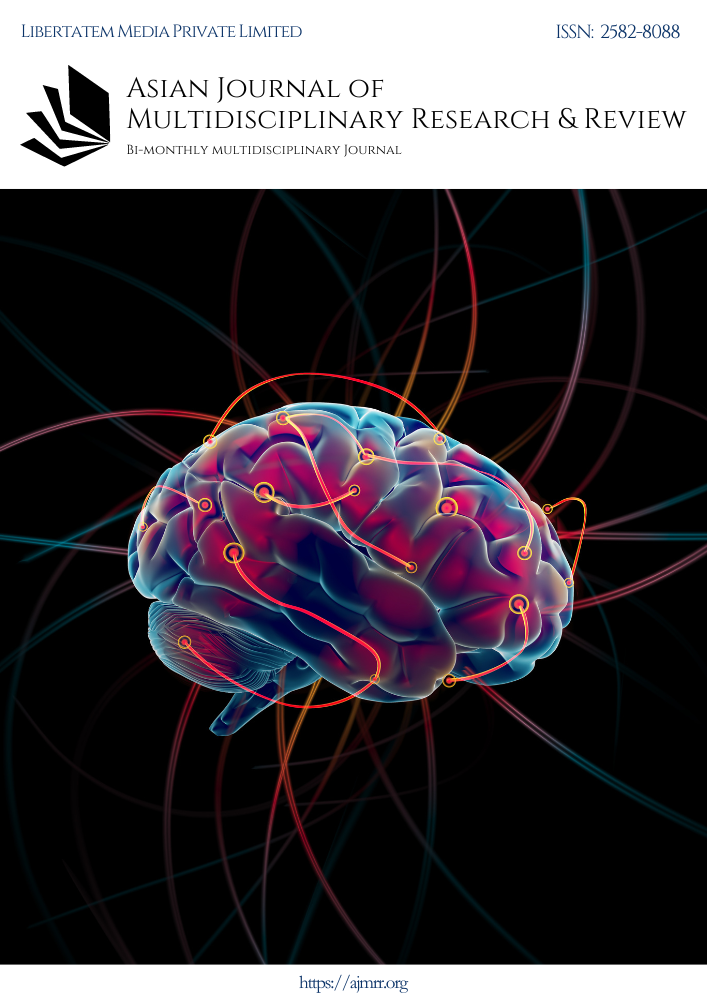The Role of Social Media in Shaping Public Perception and Enabling Surveillance During the COVID-19 Pandemic: Implications for Healthcare Professionals
Keywords:
Social Media, COVID-19 Pandemic, SARS-CoV-2Abstract
The COVID-19 pandemic has highlighted the critical role of social media in disseminating information, shaping public perceptions, and enabling disease surveillance. This study examines how healthcare professionals have utilized social media during the pandemic, analyzes public sentiment and key topics of discussion on social platforms, and explores the implications for public health communication and outbreak monitoring. Using a mixed-methods approach combining social media analytics and surveys of healthcare workers, we found that social media served as a key channel for rapid information sharing but also contributed to the spread of misinformation. Healthcare professionals leveraged social platforms to educate the public and combat false claims, though faced challenges in cutting through the noise. Analysis of Twitter data revealed shifting public sentiments over the course of the pandemic, with fear and confusion dominant in early stages giving way to frustration and pandemic fatigue over time. The study highlights the importance of strategic social media engagement by health authorities and the potential of social media data for augmenting traditional public health surveillance methods.
Downloads
References
Aiello, A. E., Renson, A., & Zivich, P. N. (2020). Social media– and internet-based disease surveillance for public health. Annual Review of Public Health, 41, 101-118.
Bojja, G. R., Ofori, M., Liu, J., & Ambati, L. S. (2020). Early public outlook on the coronavirus disease (COVID-19): A social media study. AMCIS 2020 Proceedings.
Chan, A. K. M., Nickson, C. P., Rudolph, J. W., Lee, A., & Joynt, G. M. (2020). Social media for rapid knowledge dissemination: Early experience from the COVID-19 pandemic. Anaesthesia, 75(12), 1579-1582.
Chew, C., & Eysenbach, G. (2010). Pandemics in the age of Twitter: Content analysis of Tweets during the 2009 H1N1 outbreak. PloS One, 5(11), e14118.
Cinelli, M., Quattrociocchi, W., Galeazzi, A., Valensise, C., Brugnoli, E., Schmidt, A. L., ... & Scala, A. (2020). The COVID-19 social media infodemic. Scientific Reports, 10(1), 1-10.
Depoux, A., Martin, S., Karafillakis, E., Preet, R., Wilder-Smith, A., & Larson, H. (2020). The pandemic of social media panic travels faster than the COVID-19 outbreak. Journal of Travel Medicine, 27(3), taaa031.
Golder, S., Ahmed, S., Norman, G., & Booth, A. (2021). Attitudes toward the ethics of research using social media: A systematic review. Journal of Medical Internet Research, 23(6), e27420.
Li, J., Xu, Q., Cuomo, R., Purushothaman, V., & Mackey, T. (2020). Data mining and content analysis of the Chinese social media platform Weibo during the early COVID-19 outbreak: Retrospective observational infoveillance study. JMIR Public Health and Surveillance, 6(2), e18700.
Mackey, T. K., Li, J., Purushothaman, V., & Nali, M. (2020). Big data, natural language processing, and deep learning to detect and characterize illicit COVID-19 product sales: Infoveillance study on Twitter and Instagram. JMIR Public Health and Surveillance, 6(3), e20794.
Malecki, K. M., Keating, J. A., & Safdar, N. (2021). Crisis communication and public perception of COVID-19 risk in the era of social media. Clinical Infectious Diseases, 72(4), 697-702.
Merchant, R. M., & Lurie, N. (2020). Social media and emergency preparedness in response to novel coronavirus. JAMA, 323(20), 2011-2012.
Moorhead, S. A., Hazlett, D. E., Harrison, L., Carroll, J. K., Irwin, A., & Hoving, C. (2013). A new dimension of health care: Systematic review of the uses, benefits, and limitations of social media for health communication. Journal of Medical Internet Research, 15(4), e85.
Tasnim, S., Hossain, M. M., & Mazumder, H. (2020). Impact of rumors and misinformation on COVID-19 in social media. Journal of Preventive Medicine and Public Health, 53(3), 171-174.
Ventola, C. L. (2014). Social media and health care professionals: Benefits, risks, and best practices. Pharmacy and Therapeutics, 39(7), 491-520.
Downloads
Published
Issue
Section
License

This work is licensed under a Creative Commons Attribution-NonCommercial-ShareAlike 4.0 International License.
License Terms
Ownership and Licensing:
Authors of research papers submitted to the Asian Journal of Multidisciplinary Research & Review (AJMRR) retain the copyright of their work while granting the journal certain rights. Authors maintain ownership of the copyright and grant the journal a right of first publication. Simultaneously, authors agree to license their research papers under the Creative Commons Attribution-ShareAlike 4.0 International (CC BY-SA 4.0) License.
License Permissions:
Under the CC BY-SA 4.0 License, others are permitted to share and adapt the work, even for commercial purposes, as long as proper attribution is given to the authors and acknowledgment is made of the initial publication in the Asian Journal of Multidisciplinary Research & Review. This license allows for the broad dissemination and utilization of research papers.
Additional Distribution Arrangements:
Authors are free to enter into separate contractual arrangements for the non-exclusive distribution of the journal's published version of the work (e.g., posting it to institutional repositories or publishing it in books), provided they acknowledge the initial publication of the work in the Asian Journal of Multidisciplinary Research & Review.
Online Posting:
Authors are encouraged to share their work online (e.g., in institutional repositories or on personal websites) both prior to and during the submission process to the journal. This practice can lead to productive exchanges and greater citation of published work.
Responsibility and Liability:
Authors are responsible for ensuring that their research papers do not infringe upon the copyright, privacy, or other rights of any third party. The Asian Journal of Multidisciplinary Research & Review disclaims any liability or responsibility for any copyright infringement or violation of third-party rights in the research papers.



